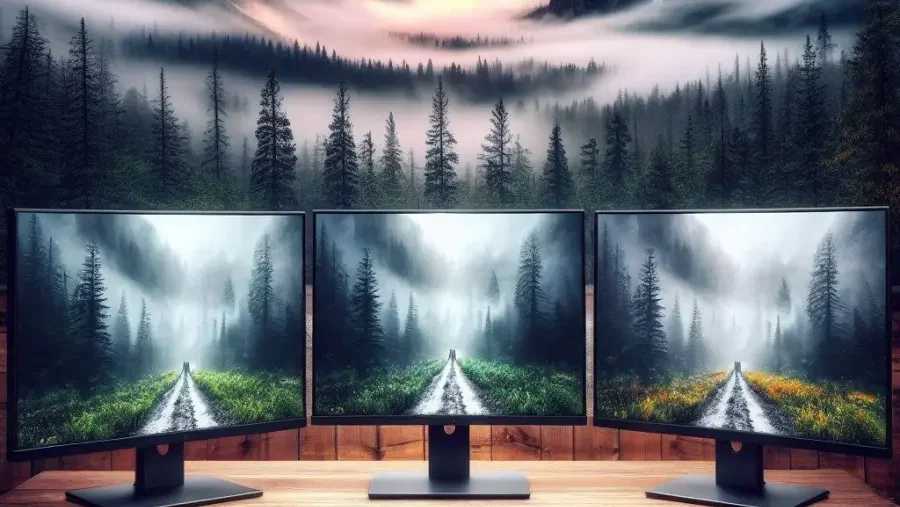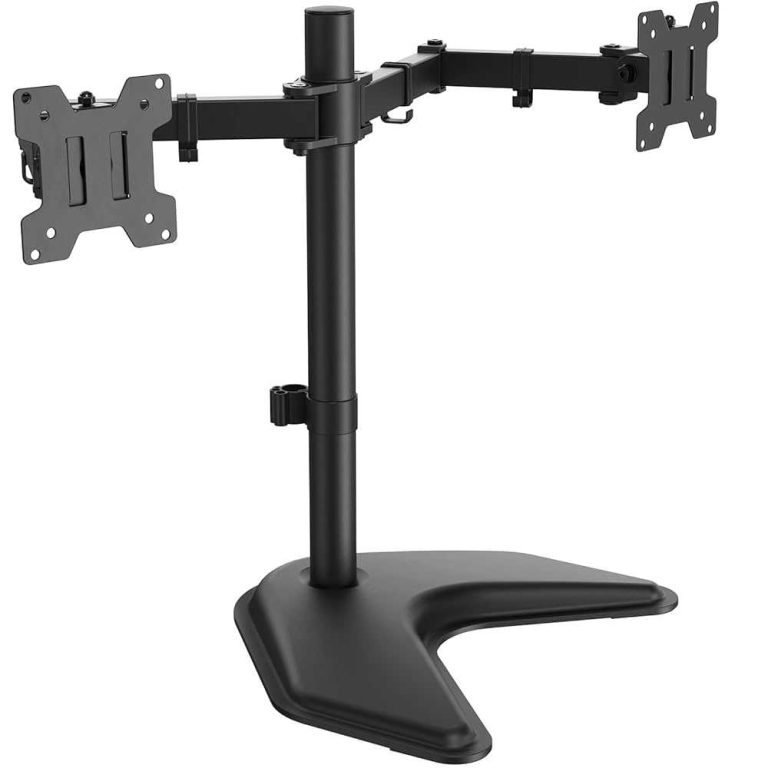Yes, HDR400 monitors can be a good choice for casual users and gamers seeking improved visuals without breaking the bank. They offer decent high dynamic range performance that can enhance picture quality, especially in games and movies. However, they may not deliver the same level of brilliance and contrast as higher-tier HDR displays. Overall, HDR400 monitors are a solid entry point for those wanting better color and contrast, but they have their limitations.
If you’re wondering whether HDR400 monitors are worth it, the answer depends on your expectations and budget. These monitors can significantly improve your viewing experience over standard displays, providing richer colors and better contrast, but they might not satisfy professionals or those craving the most stunning visuals. In this article, we’ll explore what HDR400 monitors are, their advantages, drawbacks, and whether they’re a suitable upgrade for your setup.
Are HDR400 Monitors Good? An In-Depth Look at HDR400 Display Quality
Understanding What HDR400 Means
HDR400 is a certification level for monitors indicating their ability to display high dynamic range content. It is the entry point in the VESA DisplayHDR certification standards. HDR400 monitors can produce brighter images and a wider color range than standard displays. However, they have limitations when it comes to perfect contrast and color accuracy.
Brightness and Contrast in HDR400 Monitors
HDR400 monitors can reach a maximum brightness of 400 nits, which is suitable for casual gaming and media consumption. This brightness level helps in highlighting bright details in videos and images. Yet, compared to higher HDR certifications like HDR600 or HDR1000, HDR400 displays may not deliver the same level of contrast depth, causing some scenes to appear less vibrant.
Color Performance and Range
These monitors typically support a 8-bit color depth, providing around 16.7 million colors. This is enough for everyday tasks and casual gaming. While they handle standard sRGB color space well, they may struggle with more demanding color workflows used in professional editing. The wider color gamut seen in higher HDR standards might not be fully supported here.
Pros of HDR400 Monitors
- Affordable pricing makes HDR400 monitors accessible for many users.
- Good for casual gaming, streaming, and daily productivity tasks.
- Most HDR400 monitors feature fast response times, suitable for gaming.
- Lightweight and often have sleek designs perfect for modern setups.
Cons and Limitations of HDR400 Monitors
- Limited contrast ratio impacts the depth of HDR images.
- Brightness may not be sufficient for very bright rooms or HDR content requiring high luminance.
- Color accuracy and range are moderate, not ideal for professional photo or video editing.
- Some content may not look significantly different from SDR on these displays.
The Ideal Users for HDR400 Monitors
Casual Gamers
Playing games with HDR400 monitors provides a better visual experience than standard displays, especially for titles with bright and colorful graphics. Fast response times also help in reducing motion blur.
Streaming and Watching Content
HDR400 monitors enhance streaming videos by providing brighter highlights and more vibrant colors. They are suitable for casual watching but may not satisfy home theater enthusiasts.
Office and Everyday Use
For browsing, document editing, and daily tasks, HDR400 monitors offer sufficient image quality without the high cost of advanced HDR monitors. They provide clear images and decent color reproduction for work.
Comparing HDR400 to Higher Standards
| Feature | HDR400 | HDR600 | HDR1000 |
|---|---|---|---|
| Brightness | Up to 400 nits | Up to 600 nits | Up to 1000 nits |
| Contrast Ratio | Moderate | Better | Excellent |
| Color Gamut | Slightly limited | Wider (DCI-P3) | Wide (DCI-P3 or Adobe RGB) |
| Price Range | Most affordable | Mid-range | Premium |
Are HDR400 Monitors Worth It?
If you seek a budget-friendly display that offers some HDR benefits, HDR400 monitors are a good choice. They provide noticeable improvements over SDR monitors for casual use. However, for professional-grade color work or high-end entertainment, higher standards may be necessary.
Additional Considerations When Choosing an HDR400 Monitor
- Panel Type: IPS panels deliver better color accuracy and viewing angles.
- Response Time: Look for monitors with fast response times for smooth gaming.
- Connectivity Options: Check for HDMI and DisplayPort inputs compatible with your devices.
- Size and Resolution: Larger screens with higher resolutions like 1440p or 4K can enhance your viewing experience.
Related Topics and Additional Features
Gaming Performance and HDR
HDR400 monitors are suitable for casual gaming, especially if paired with high refresh rates like 120 Hz or 144 Hz. They help make in-game lighting effects more immersive.
Future-Proofing and Compatibility
While HDR400 is a good starting point, future needs may demand higher standards. Ensure your graphics card supports HDR to maximize display capabilities.
Calibration and Settings
Proper calibration improves color accuracy and contrast. Adjusting settings like brightness, contrast, and color profiles can optimize your HDR experience.
In summary, HDR400 monitors serve well for users who desire an inexpensive upgrade from standard displays. They offer moderate HDR benefits, making casual gaming and media viewing more enjoyable. However, users with professional requirements or high-end entertainment needs should consider higher HDR certifications for the best experience.
The Cheapest HDR Monitor vs the BEST
Frequently Asked Questions
What are the main benefits of HDR400 monitors for gamers and creators?
HDR400 monitors provide improved brightness and contrast compared to standard displays, making images appear more vibrant and realistic. Gamers benefit from enhanced visual clarity and more detailed dark and bright areas, while creators see better color depth and dynamic range, which helps in accurate editing and content creation.
Are HDR400 monitors suitable for professional photo or video editing?
While HDR400 monitors offer noticeable improvements over standard screens, they may not meet the strict color accuracy requirements of professional editing. For tasks demanding precise color representation, higher HDR levels like HDR600 or HDR1000 are preferable, but HDR400 can still serve well for casual and semi-professional editing.
How does HDR400 compare to higher HDR standards in terms of picture quality?
HDR400 provides basic high dynamic range features, offering better contrast and brightness than standard monitors, but it doesn’t deliver the same level of luminance and color depth as higher HDR standards. Monitors with HDR600 or HDR1000 support more vivid visuals with deeper blacks and more accurate colors, making them better suited for high-end content consumption and production.
Can HDR400 monitors handle fast-paced gaming without motion blur?
HDR400 monitors can handle fast-paced gaming quite well, especially if they have a high refresh rate and low response time. However, the HDR aspect mainly enhances visual quality rather than motion clarity. For the best experience, look for models that combine HDR400 with features like high refresh rates and low input lag.
Is the price of HDR400 monitors justified by their performance?
Most HDR400 monitors are budget-friendly and offer notable visual improvements over standard displays. Their price is typically justified for users who want better contrast and color for everyday gaming, multimedia, or casual content creation. For professional use or high-end gaming, consider models with higher HDR capabilities for more significant benefits.
Final Thoughts
HDR400 monitors provide decent HDR performance for casual users and gaming enthusiasts. They boost brightness and contrast, making images more vibrant. However, their limited peak brightness may not satisfy those seeking cinematic quality.
Overall, are hdr400 monitors good? Yes, for everyday tasks and light gaming, they offer good value. But for professional color work or high-end gaming, higher HDR standards might be necessary.

I follow the latest trends in smart devices, portable monitors, and gaming accessories. My goal is to provide real-world insights that help readers make smarter tech decisions.





